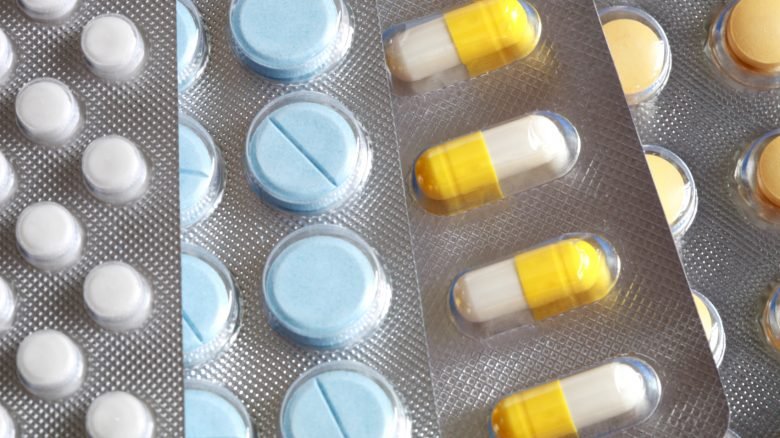The European drug production chain is on its knees. Active ingredients are increasingly imported from Asia. At the same time, production costs have skyrocketed, decimating businesses. The EU now takes various measures based on coordination between member states

There are more and more of them medications not taken at the pharmacy. A problem that does not only concern Italy but extends to the entire EU. The complaint is contained in Nomisma’s latest Observatory on the “Generic Medicines System in Italy”, which reveals why the drug supply chain has failed.
Now, however, the European Commission is trying to take action. A number of measures aim to prevent drug shortages not only in the coming months but also in the long term: among them a European solidarity mechanism and a list of critical medicines.
Europe no longer produces the active ingredients
The reasons behind the crisis in the drug production chain – according to the report of the consulting company – are different. First of all, Europe produces less and less active ingredients and is increasingly limited in their import, especially from Asian countries: if in 2000, in fact, the production of the latter in Europe was about 53%, now the value has fallen to 25%.
In fact, raw materials for pharmaceutical use (so-called APIs) are increasingly derived China (over 20%). The old continent is also heavily dependent onIndia: these two states supply EU markets with more than 56% of active ingredient needs. If we also take into account the intermediate products, necessary for the packaging of a medicine, the Dependence on Asia reaches 74%.
Too many production costs and fixed prices
Another raw nerve in the European production chain is represented by costs, which have skyrocketed, bringing companies to their knees, unable to raise prices. Based on data from Medicines for Europe in 2022 i Shipping Costs have increased fivefold. The raw material now costs between 50% and 160% more.
Packaging also saw an increase of between 20% and 33%. Added to all this was the increase in energy prices (+65% for natural gas and +30% for electricity). Therefore, businesses had to deal with it increase in production costs, must change procurement procedures. The result is drug shortages in many European markets.
Pharmaceutical companies in decline
Across Europe, more and more medicines are disappearing: in the last ten years, 26% of them have disappeared. equivalent drugs33% of antibiotics (sixteen fewer types in Poland, eleven in Spain and ten in France) and 40% of oncology drugs. A decline that goes hand in hand with the impoverishment of the industrial fabric. If you look at the situation of the pharmaceutical companies, the scenario is grim: in Italy in the last decade the number of suppliers of the most used antibiotic has decreased from ten to three and of the most widespread anticancer drug from eighteen to two.
In Europe last year, the majority (69%) of generic medicines on the market were produced by just two companies. More than half of antibiotics (56%) and 70% of oncology drugs are listed under fewer than two companies. In various types of drugs the number of construction companies decreased by 30-40%leaving only one or two suppliers in most countries.
I am in Italy in 2023 3,512 drugs were hard to find – according to Aifa data – while in 2018 it was 1672. “The progressive reduction and sometimes the disappearance of medicines is a high risk factor and because production in the pharmaceutical sector has different times compared to other sectors: the return to production requires months ». , points out Maurizio Marchesinipresident of Nomisma.
What is Italy doing?
Mimit, the Ministry of Business and Made in Italy, together with the Ministry of Health, created two working groups for the pharmaceutical and biomedical sectors, which met for the first time last March.
“We all know the importance of returning the production of active ingredients to Italy and the possibility of making Italy more and more attractive in terms of research and production of medicines,” the health minister clarified. Orazio Schillaciwho referred to the need for “adequate investment in healthcare infrastructure, research laboratories and professional skills development, which can encourage the development of the pharmaceutical industry”.
The latter in Italy – based on Mimit data – currently counts more than 235 companies with at least 10 employees. In the Center-North there are 87% of businesses and 91% of employees. The top five regions for workers are Lombardy, Lazio, Tuscany, Emilia Romagna and Veneto.
What is the EU doing?
The European Commission now aims to prevent and reduce shortages, especially of antibiotics and of the most critical medicines, i.e. those for which there are no valid alternatives and the shortage of which would cause serious harm to patients. “We need one single market for medicines in the EU“, he clarified Stella KyriakidisCommissioner for Health and Food Safety.
Therefore, at the end of October, the Commission approved a series of actions to tackle drug shortages in Europe this winter and beyond. First of all, the launch of the “Voluntary European Medicines Solidarity Mechanism” established by EMA, the European Medicines Agency with EU countries: simply put, when an EU member state needs a medicine, it can reports to other member states, which can respond from their own reserves.
A. will also be available by the end of 2023 List of critical medicines across the EU, now being drafted, which will be used for supply chain analysis. There may be legal exemptions that would allow citizens to have quick access to medicines “including extending their shelf life or rapidly approving alternatives”.
Meanwhile, Hera, the European Health Emergency Preparedness and Response Authority, and EMA, the European Medicines Agency, have identified essential antibiotics, including pediatric onesfor which there is a risk of critical shortages before winter.
The Commission ultimately intends to determine an alliance for critical medicines, operational from the beginning of the new year, which will enable coordination between authorities, industry, civil society representatives, the Commission and EU agencies against drug shortages. In the first half of 2024, a common strategy for the creation of stockpiles of medicines will be defined. In addition, they will start strategic partnerships with third countries for the production of critical medicines.
November 30, 2023

